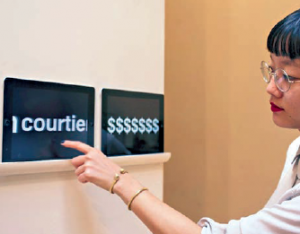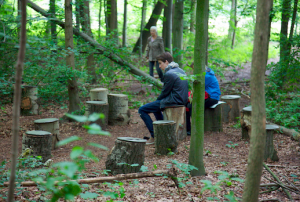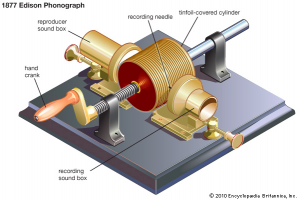Previous Work: Tech Rider, Check-ins, and various documentation
Tech Rider, Check-Ins, Documentation
<>*<>*<>*<>*<>*<>*<>*<>*<>*<>*<>*<>*<>*<>*<>*<>*<>*<>*<>*<>*<>
Conceptual Mindset
This project gave me an excellent chance to explore the interactivity of sound and its surrounding environment, which in this case was water. For me, I have always found a solace in the pool. As a water polo player and former swimmer, long swim sets can be grueling and mentally exhausting, pushing you to unthinkable limits. In these moments, however, the water has a tendency of captivating you and containing the chaos. You hear inhaling and exhaling, the bubbles of the water, and the splashing of your hands and feet – and nothing else. While some believe these grueling sets to be dreadful, I always find myself with a strong urge to seek them out because I crave the unique relationship of my body with the simplistic aquatic surroundings.
With this in mind, the goal of my project was to replicate this understanding of hearing noises underwater. Specifically, I connected a waterproof piezo pick-up to my own body and swam in the pool. Depending on my location in the pool, the piezo picked up the noise playing from an underwater speaker. This pick-up, then, played into a speaker above water, ultimately providing the listeners around the pool with the sounds that I could hear underwater. In this way, my goal for the project was to bring the listener into the aquatic environment to gain a perspective of what it is like to be fully immersed and consumed by the surrounding water.
Process and Execution
On November 16th, it came time to set up my project in the pool. There were numerous components that went into this set-up process:
- Wooden structure holding pulley system, through which speaker cable flows through
- 25-yard (length of swimming pool) speaker cable holding piezo pick-up
- Speaker system with piezo pickup input connected
- Lots of wires! (see tech rider in attachment above)
Overall, the set-up process was relatively complicated, so I had to arrive at the pool about an hour before observers arrived to make sure that I would not run late. In setting up, I did not run into any difficulties until I began to play from the underwater speaker. As Professor Topel and I decided, I would play very calm breathing through the transducer. This noise, however, was not audible to the piezo pickup in the pool unless it was within 5-10 feet from the noise emission. While changing the sound contradicted my original, intentional plan of playing breathing to simulate the noises of breathing in a swim set, we came to the conclusion that playing a sine wave frequency would work as well. After experimenting with various noises, I found that the piece actually functioned quite well under this process, and, in fact, it allowed for me to move the full length of the pool away from the transducer and still receive a strong pick-up.
Through this new setup, Professor Topel and I found that there was now an opportunity to play with the sine frequency to ultimately discover what the resonant frequency of the pool is. By fluctuating this frequency and having various listeners provide feedback on what was loudest, we were able to determine the characteristic frequency of the pool, which was very unique and allowed us to better understand the aquatic environment.
Further, I found the piece to be very exciting because the sound emitting from the speaker above water for the listeners was the exact same as the sound that I heard underwater as I was swimming. To me, this accomplished my original goal of providing the listener (above water) with an underwater experience, ultimately mimicking the sound of the swimmer to those standing along side of the pool. While playing the sine frequency, I even swim underwater with the piezo microphone and blew bubbles towards it, which after talking to the viewers of the piece, sounded incredibly realistic and was very interesting for them to hear.
From my original concept generation, to the process of creating the piece (wiring, constructing wooden pulley system, etc.), to the implementation of it in the natatorium, I found this project to be both rewarding and fulfilling. Many of the pieces that we learned about this term focused heavily on sound environments and the interactivity of the human body with these sounds. To me, I wanted to hone in on the idea of the human body being immersed in the water and fully captivated by the surrounding environment. One piece in particular that stands out to me in terms of similarity is titled Rain Room and was part of the Random International project. In this piece, the user enters into a room that is filled with rainfall – the noises consume the listener and the smells of the rain also fill the air around. In this moment, the individual viewing the process becomes a part of the environment, rather than a person viewing the environment – there is a notion of connectivity. Similar to Rain Room, I wanted my project to take the listener into the water and create an interactive and holistic viewing experience. Overall, I think I achieved my goals not only in creating and executing the piece, but also in learning more about sound art and our relationship with acoustic environments, interactivity of humans with sounds around us, and the importance of intentionality in the installation and implementation process.
Final Documentation of Project
This image displays the setup of the wooden structure with sand bags placed on top. I decided to implement the setup in this way to prevent a situation in which the wooden structure would fall into the water and drag in expensive equipment with it. By putting two seventy-pound sand bags on top of the structure, I prevented this from happening.

Here you can see the setup of the piece at a side angle. Additionally, I am the one presenting (in the pink-ish suit) along with Professor Topel (right) and visitors (left). You can also see the speaker cable flowing through the pulley system in this image.
Here, you can see the video of my presentation in-full. I presented the piece by swimming away from the transducer with the piezo in hand, towards it, and even took it deep underwater to blow bubbles towards it. Overall, I thought it was very fun and interesting to present to the visitors, and I think that they walked away with a new perspective of how sound interacts underwater as opposed to above.
I really enjoyed creating this project and hope you enjoyed listening to it as well!







